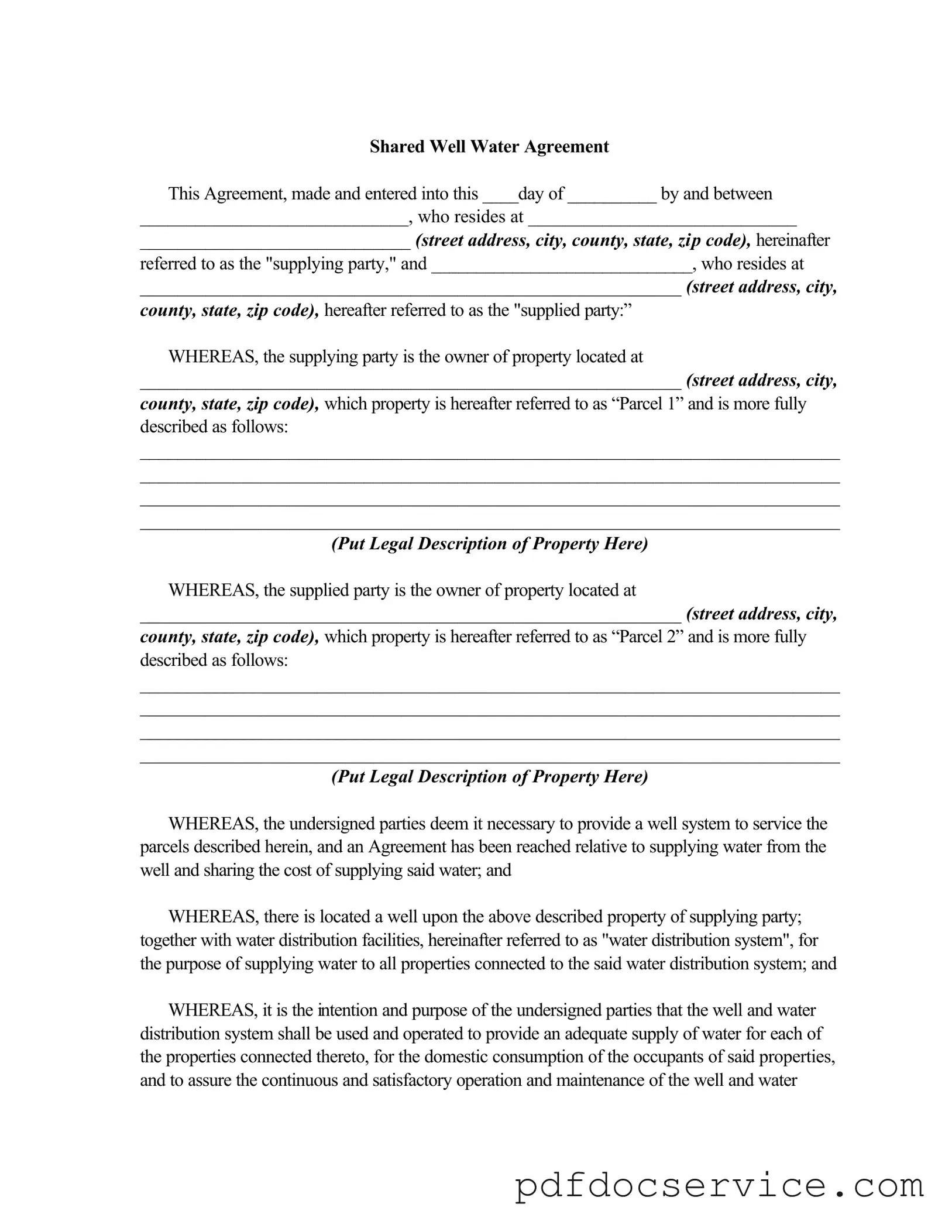What is a Shared Well Agreement?
A Shared Well Agreement is a legal document that outlines the rights and responsibilities of two or more property owners who share a well and water distribution system. It establishes how water will be accessed, the costs associated with maintenance, and the obligations of each party involved.
Who are the parties involved in the agreement?
The agreement involves two primary parties: the "supplying party," who owns the well and the associated property, and the "supplied party," who benefits from the water supply. Each party must provide their respective addresses and legal descriptions of their properties.
What are the main terms of the agreement?
The agreement includes several key terms, such as:
-
The right to draw water from the well for domestic use.
-
Payment of an annual fee for water usage.
-
Sharing of maintenance and operational costs.
-
Responsibilities for repairs and maintenance of water pipes.
How are costs determined and shared?
Costs are divided equally between the supplying party and the supplied party. This includes annual fees for using the well and shared expenses for maintenance and repairs. Each party must pay their proportionate share promptly.
What happens if one party wants to terminate the agreement?
To terminate the agreement, the party wishing to withdraw must file a written statement of termination with the appropriate county office. Once terminated, that party loses the right to use the well and must disconnect their water line at their own expense.
Are there restrictions on water usage?
Yes, the agreement specifies that water drawn from the well is for domestic use only. It explicitly prohibits using the water for filling swimming pools or allowing others, except household guests, to access the water supply.
What if the well becomes contaminated?
If the well becomes contaminated or inadequate for the needs of the parties, the agreement will terminate. The parties may then seek alternative water sources, with a reasonable time allowed to make necessary connections.
What are the easements mentioned in the agreement?
Easements are rights granted to each party to access the other’s property for maintenance and operation of the well and water distribution system. These easements must be described in the agreement and should not be obstructed by landscaping or other improvements.
How are disputes resolved under the agreement?
Disputes arising from the agreement must be resolved through binding arbitration. Each party selects an arbitrator, and those arbitrators choose a third to resolve the issue. The arbitration process follows the rules set by the American Arbitration Association.
Is the agreement permanent?
The agreement is generally perpetual, meaning it remains in effect until terminated by the parties as outlined. This ensures that the rights and responsibilities continue for future owners and occupants of the properties involved.
